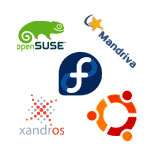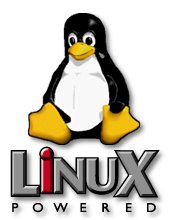Many articles and subscriptions related to Linux are posted in TuxBeat groups. Subscribe yourself and look for the updates right on your desk just by one click.
Tuesday, October 31, 2006
A Linux start-up on the path to profits

Ubuntu has been a phenomenon in the desktop Linux niche. But Canonical Chief Executive Mark Shuttleworth, who founded the project, has his eyes on the more lucrative server market.More>>
Monday, October 30, 2006
Linux is not that scary
 Everyone is afraid of Linux. Oooooh that OS for geeks? Not really. Not really at all. Try Ubuntu and tell me whether Linux is scary. Its cool and the features in that are really awesome and mind-blowing. It has almost all the things that Windows has but some it still needs a few things that are only there in Windows. However, I can honestly say, it is completely safe (and pretty fun) to dual boot Linux with Windows.
Everyone is afraid of Linux. Oooooh that OS for geeks? Not really. Not really at all. Try Ubuntu and tell me whether Linux is scary. Its cool and the features in that are really awesome and mind-blowing. It has almost all the things that Windows has but some it still needs a few things that are only there in Windows. However, I can honestly say, it is completely safe (and pretty fun) to dual boot Linux with Windows.There are two ways you can check Ubuntu. The first one is just to run the CD directly by booting your system with CD boot as your option. This doesn't harm your system not any memory is used. It uses RAM to store its data. Try this. If you are satisfied enough then go for the second option. Try installing it on your disk. But be careful when partitioning, read the screen carefully.
In Linux you do have to use the command line pretty often (it’s like DOS) but you will get all the instructions at the documentation and the forums. After you’ve set up everything though, you won’t have to touch it much. Linux cannot replace your Windows. If you’re used to beloved apps like Photoshop, Dreamweaver and so forth, you can’t replace Windows with Linux as the free substitutes for those programs are either somewhat different or they have less functionality.
Linux is smart. It just makes sense. It does run faster. It does have more apps for it. It is easier to look at.
The most famous linux versions available for all kinds are
- SUSE
- Mandriva (Mandrake)
- Fedora (Red Hat Project)
- Xandra OS
- Ubuntu (2006 most popular OS)
TheWanderer
TheWanderer linux is an open source project. You can download the CD from TheWanderer
Go through the following link to check the videos of how Linux looks (for novice).
Start Booting
Go through the Take the course of Linux link to know basics about Linux
Go through the following link to check the videos of how Linux looks (for novice).
Start Booting
Go through the Take the course of Linux link to know basics about Linux
Saturday, October 28, 2006
Linux Usage on the Rise in Large Companies

Linux usage in the servers of large companies is continuing to rise. 73% of enterprise companies are running Linux on at least some of their servers. Just six months ago that figure was 67% and a year ago it was 65%, as per Evans Data Corp's latest Enterprise Development Issues Survey...
Linux usage in the servers of large companies is continuing to rise. 73% of enterprise companies are running Linux on at least some of their servers. Just six months ago that figure was 67% and a year ago it was 65%, as per Evans Data Corp's latest Enterprise Development Issues Survey.
"We continue to see Linux making deeper inroads into the Enterprise space as it matures to handle more critical business workloads," states John Andrews, President of Evans Data. "We are continuing to see more and more enterprise IT managers make better use of Linux, integrating it into their heterogeneous environments where it makes the best business sense."
Other findings from Volume I of the 2006 Enterprise Survey of almost 400 developers include:
* Grid computing is on the rise. Fifteen percent of respondents are currently using a grid computing strategy, up from ten percent six months ago. One third of enterprise companies either have a grid in place or expect to in the next twelve months.
* Eighteen percent of those surveyed are currently implementing Rich Internet Applications, a 50% increase from six months ago.
* Desktop database usage is slipping. Only about half of respondents use desktop databases compared to 66% one year ago.
Subscribe to:
Comments (Atom)